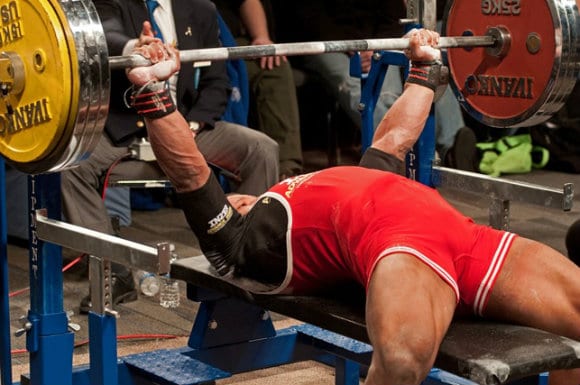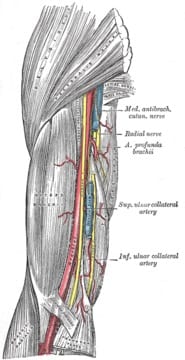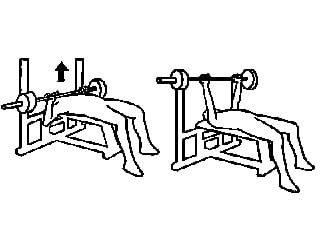By the healthiergang writer , ISSA certified personal trainer and student at SaNIS (School of Nutrition and Sports Integration).
Multiarticular vs Monoarticular exercises
In approaching to writing a training card one of the key points is the choice of exercises.
The situation is more complex than it may seem, it is not enough to choose them at random among those found in the first database at hand. Too many factors to consider, many variables, very relevant the subjective component .. In short, as in all things you have to think about it.
Today, however, we are talking about a question that has always arisen in this area, namely the distinction between single-joint and multi-joint exercises. Which are the best? What are the differences? Are some of these really worth betting on? But most of all…does this distinction really make sense?
Here, we will understand that the answer to this last question and no. In truth, thinking in terms of multi-joint or single-joint exercises can be very misleading. Let's try to understand why.
Concepts
First of all I ask you ... what is meant by multi-joint and single-joint exercises? It may sound silly as a question but in reality ... no, she is definitely stupid.
So, the multiarticular exercises are those exercises that involve more than one joint.
Think for example of the flat bench where the shoulder joint (glenohumeral) and the elbow joint are involved.
- single joint exercises vice versa they involve only one, in this case the example is given to us by scott bench where the only joint involved is that of the elbow.

Differences
# Difference 1
Squat, bench press, deadlift… All these exercises have not only fame in common. The first aspect to emphasize is that the multi-joint exercises they are more complex from an execution point of view, probably leading to a high risk of injury (acute or chronic) especially for the less experienced [1] [2].
# Difference 2
However, such gestures have a great advantage. Their complexity and the strong muscle synergy required lead to an improvement in strength and power at a systemic level [8] [9]. This logically is all the more true the more complex the execution is. We will talk in another article about the difference between machines and free weights, for now just know that this is one of the reasons why the concept of mono and multi-joint is not suitable for use: we can have multi-joint that require poor synergy and coordination and single joint that require more!
# Difference 3
A further point lies in the fact that multiarticulars require (as we have seen, in most cases) much more exercise to get to learn the movement pattern well and above all a greater adaptation to the neural stimulus [10].
# Difference 4
Fourth point to analyze: the hormonal response. Exercises involving greater muscle mass have been found to lead to increased secretion of anabolic hormones such as GH, T or molecules such as beta-endorphins [11] [12] [13].
The problem is that this increase is not a predictor of responses in terms of adaptation, performance and body composition over the long term. In other words, even if in acute we see a peak in terms of hormonal response, in the long run it is not said that we adapt better (ie that we become bigger and stronger) [14] [15].
# Difference 5
Another problem lies in the recovery times which, in multi-joint exercises, are, on average, greater [19].
# Difference 6
Finally, the multiarticular exercises allow a joint excursion (ROM) in most cases more limited.
It also depends on the execution
 Let's clarify a concept now. Talking about “mono” or “multi-joint” exercises can be incorrect. More properly we should speak of mono or multi-joint EXECUTIONS.
Let's clarify a concept now. Talking about “mono” or “multi-joint” exercises can be incorrect. More properly we should speak of mono or multi-joint EXECUTIONS.
Think of the Curl with dumbbells, where we worked with the shoulder locked (for example with the use of a arm blaster or of scott bench) then the only joint involved would be that of the elbow.
However, remember that the biceps is a bi-articular muscle, so if we wanted to work in his Full ROM (max lengthening and max shortening) we should also involve the articulation scapulo-humeral (with consequent involvement of the shoulder muscles, primarily anterior deltoids). We therefore understand that execution is the determining factor of the joints involved.
Multi Fundamentals and Mono for Isolation?
Another topic is what he identifies in the multi-joint exercises cd exercises or high muscle synergy, while in the single-joint exercises muscle isolation exercises. This interpretation is based on the fact that, involving multiple joints, more muscles come into play and vice versa less joints we involve less muscles have to come into play. This is partially true.
As we have seen, the curl can be mono or multi-articular depending on the execution. It is true that involving the scapulohumeral joint there will be a parallel involvement of the affected musculature, however (assuming that the humerus is flexed once the elbow flexion is completed) the intervention of the shoulder will be minimal as the lever arm will be extremely reduced (ie minimum torque). And here I immediately answer a doubt.
It is true that you feel the shoulder very involved when you curl but… are you sure it is the shoulder musculature and not the biceps at the height of its insertion on the supraglenoid tubercle of the scapula?
But let's take a step back. The above association makes sense, in most cases the multi-joint exercises require the intervention of a greater number of muscle groups than the single-joint exercises. So even if it is not certain that ... in the end the concept lends itself well to the various analyzes that are made.
Which are the best?
The ACSM mostly recommends the use of multi-joint exercises [3]. Further advice that is given is that of perform the multi-joint exercises first and only after the single-joint exercises [4] [5] [6]. One of the reasons could be (but personally I am skeptical) that the greater hormonal response given by multi-joint exercises can bring benefit in the subsequent execution of single-joint exercises (on probably smaller muscle groups).
A first conclusion we can give is that, if the purpose is to improve strength and power at a systemic level, then multi-joint exercises with high muscle synergy are for us.
Another point that must be analyzed is the fact that with multi-joint exercises, involving in most cases several muscle groups, you can see a strong reduction in performance due to a limiting (ie weak) muscle group. Take the example of the flat bench. If we have little strength on the chest or triceps our performance will be compromised and we will have almost all work on the triceps or chest respectively [7]. Basically to maximize the effectiveness of multi-joint exercises we must ensure that there is a good response from all the muscles involved (there may however be some strategic exceptions).

The single-joint exercises on the other hand have a nice advantage: safety of execution, relative ease of the motor pattern, poor involvement of the synergistic musculature ... in case we want to isolate a muscle and achieve a good feeling with the contraction, so these exercises would definitely do for us.
This does not mean that work on the motor scheme and on theactivation of target muscle groups it is also (and perhaps above all) fundamental in exercises with high muscle synergy.
Multiarticular… for Cardio?
A heresy perhaps? No, I wouldn't say. We have seen that multi-joint exercises lead to a greater muscle involvement (in most cases).
This results in primarily a systemic stimulus with a greater increase in EPOC after exercise and a greater impact on VO2Max [18] [19].
Basically, taking into account that cardio is based on increasing the HR (heart rate), the use of multi-joint exercises can lend itself very well to reaching the target parameters. These exercises are in fact very good if our goal is to recompose the body [16].
Conclusions
So, let's pull the strings of the long speech ... Reasoning in terms of multi-joint or mono-joint exercises it can be misleading. What we must consider, every time, is the muscle involvement (agonists and synergists) and, based on the target of the workout, adjust accordingly.
So if we wanted to work the chest in pre-fatigue we could initially work with crosses or at the chest flyes machine and then move on to flat bench. This can be very useful where the triceps tend to be weaker (in this way we find ourselves on the bench with the chest already tired and the "fresh" triceps which will therefore not be limiting for the performance).
Vice versa if the target is that of the improvement of the motor pattern or the performance on the gesture (flat bench), then starting immediately with this exercise may be more useful.
The fact remains that such subdivisions have a logic and a sense in that, in most cases and for inexperienced subjects, they represent functional concepts for the purpose.


























